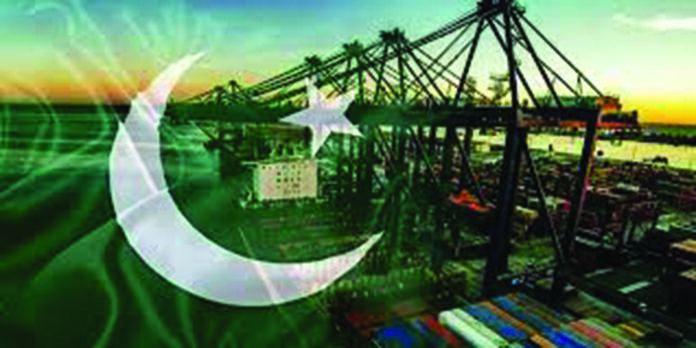There is no dearth of thinking and opinionated talent but 75 years later the hopium continues despite glaring feedback by World Bank World Country Director and Vice President Martin Raiser on the need to build on the crisis that is providing opportunity for reforms and redefining operations, and as to whether this is our economic turnaround moment.
Indicators suggest that measures taken so far by the SIFC show the trough is behind us, much to the disappointment of detractors wishing bankruptcy and chaos with far reaching game changer steps taken now at FBR with plans again for taxing retailers.
Does it actually end to shifting of CBR/FBR under Revenue Division (3 times) or being made a Division of the Ministry of Finance since 1944. After the FBR Act 2007, the tax regulator was authorized to manage all the tax laws and was responsible for policy making, but in 2018 tax policy powers were given to Finance to split administration from tax policy decisions. Tax policy is now with the Revenue Division and the split FBR empowered and to operate “independently”.
Will that last only till the IMF dictates?
Pakistan’s salaried class, facing a significant tax burden, contributed Rs 158 billion in the first half of this fiscal year, marking a 38 percent increase from the previous year. The salaried class now ranks fourth in withholding tax contributors after contractors, bank depositors, and importers.
Why are perks of poor cash, perk-rich federal government employees (1.92 million) not being taxed? Civil servants are not at a salary disadvantage when compared to their counterparts in the private sector. The total cost of a grade 21 officer is estimated to be 12 percent higher than an equivalent locally hired UN officer. Non-monetary benefits are much higher in the public sector than in the private sector, with 80 percent of the private sector workers having no nonmonetary benefits. In contrast, almost 80 percent of public sector employees have more than three non-salary benefits. World Bureaucracy Indicators of the World Bank estimates that the public sector wages in Pakistan are 53 percent higher when compared to the private-sector wages.
The Pay and Pension Commission has been formed since 1948 and its recent report submitted in 2022 has been ignored. Why appoint it then?
It is estimated that more than 1.6 million marriages happen in the country during the year. Adjusting for household incomes, it is estimated that more than Rs 110 billion is spent on weddings on an annual basis but no event organizer, hall owner or caterer or jewellery and boutique pay equivalent tax of industry or salaried individuals
Solutions advocated repeatedly are to lower taxes, incentives, mobilization of funds by provinces, amnesty, reduction in expenses, self reliance and real test of new economic team in March 2024 will be handling of burgeoning fiscal deficit, historic high inflation, discount rate of 22 percent, stagflation, rising unemployment, huge circular debt in electricity and gas sectors, continuous funding from taxpayers’ money of inefficient and loss-bearing state-owned enterprises (SOEs).
According to an article appearing on 6 February 2020 by a former federal secretary: “This [agricultural] sector is almost one fifth of the economy (18.9 percennt) and generates more than $60 billion or Rs 9 trillion worth of gross income annually…”. The Tax Expenditure Report 2020 of the FBR claimed that in tax year 2018, exempt dividend paid by the corporate sector from agricultural income was Rs. 43 billion. On the basis of Agricultural Census 2010 by Pakistan Bureau of Statistics, the Report claims: “If statutory slab-wise tax rates are applied on average income per farm for the six categories of farm sizes, the estimated revenue forgone due to this exemption comes to Rs. 69.5 billion annually”.
“Today, a mere 5 percent of large landholders in Pakistan are said to possess a massive 64 percent of the total farmland, while 65 percent of small farmers hold only 15 percent of the land “ Economy of Debt: Alternatives to Austerity and Neoliberalism in Pakistan”. Dr. Pasha, as the lead author of UNDP’s latest National Human Development Report (NHDR) on inequality, talked about the gross disparities present in the country. As an example, the agricultural and population census shows that 1 percent of farmers in Pakistan own 22 percent of all farm area”—On Equity and Happiness: UNDP at the Lahore Literary Festival
If the agricultural income tax was imposed in accordance with the Constitution provinces could significantly reduce the federation’s overall fiscal deficit besides improving the pathetic tax-to-GDP ratio.
On one hand we want to be FDI destination, but on the
other hand, PTI signalling potential withdrawal from IMF loan programme and the letter to The Economist intends to build uncertainty.
It has been restated, “ reform of the criminal justice system is the new year’s gift this country deserves. The pain we suffered in 2023 must alter us, lest it hurt us in the coming years as well”
The Annual Quality of Democracy Report 2023 states in its executive summary that “as an organisation consisting of Pakistanis for the betterment of Pakistan’s democracy, PILDAT has advised the decision-makers consistently to do the right thing by the Constitution for over two decades. Our counsel, and our efforts of capacity building and engagement with political parties have been the same”.
Yet “as we head into 2024, Pakistan is struggling with a burgeoning fiscal deficit, stagflation, rising unemployment and circular debt in the energy sector. Setting the economy on the path towards prosperity for the common citizen will require systemic reform. Pakistan’s real fiscal problem is reckless borrowing and ruthless spending, pushing the country deeper and deeper into the deadly debt trap.
Further, budgets for the last many years show grossly understated expenditures and exaggerated income and inflows, deliberately or otherwise, confirming incompetence and fraudulent behaviour.
Solutions advocated repeatedly are to lower taxes, incentives, mobilization of funds by provinces, amnesty, reduction in expenses, self reliance and real test of new economic team in March 2024 will be handling of burgeoning fiscal deficit, historic high inflation, discount rate of 22 percent, stagflation, rising unemployment, huge circular debt in electricity and gas sectors, continuous funding from taxpayers’ money of inefficient and loss-bearing state-owned enterprises (SOEs).






















